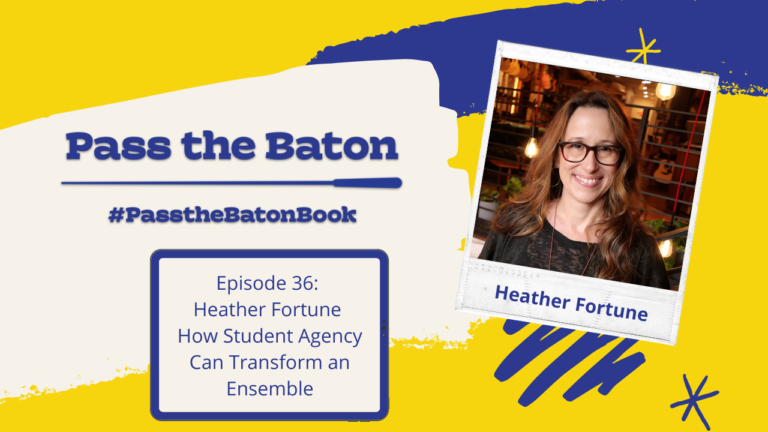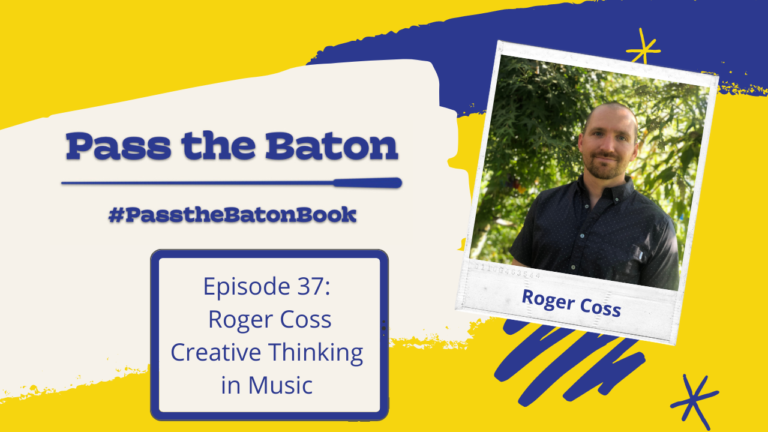This week’s interview was a real treat, as Kathryn and Theresa spoke with Dr. Scott Edgar about a very important topic: social emotional learning (SEL). Scott is an associate professor of music at Lake Forest College and also the department chair. He began his career teaching K-12 music in Dayton, Ohio before earning a PhD from the University of Michigan. It was there he developed an interest in SEL. Besides teaching at Lake Forest, Scott is also Director of Practice and Research for the Center for Arts Education and Social Emotional Learning.

What is Social Emotional Learning?
Scott first explained a basic definition of SEL. Social emotional learning is a set of skills we can embed into our music classrooms. Using these skills, we can:
- Help students to be more independent
- Help students know who they are
- Give students a sense of belonging and safety in our classrooms
- Amplify student voices and give them more agency in our classroom
In doing so, we give students an active role in their educational process and help prepare them for the tests of life.
There are three key components of SEL:
- Identity: do students understand who they are and how music connects with their lives?
- Belonging: do students feel they are in a space they can be vulnerable, and take risks?
- Agency: do students have a say in their learning path?
What does SEL Look Like in the Music Classroom?
In an SEL-rich classroom, you will see music students who are engaged and empowered. They explore music that’s relevant to their lives. The students guide the learning process, while teachers are facilitators, as opposed to directors. Scott explains SEL is not a “box” we check, nor can it only take place for five minutes during class. SEL needs to be part of everything that we do.
“How many minutes do we need to dedicate to SEL? All of them! But all of our minutes need to be music too. It’s not either or. It’s a false dichotomy.”
Throughout the rest of the interview, Scott touched on so many crucial points, including:
- We must know our students and not be afraid to dig deeper into what we don’t know yet.
- How there is a direct relationship between SEL and student empowerment.
- The value and importance of amplifying student voice.
- Recognizing that we all have unique gifts and strengths that we bring to the classroom, leading to an understanding that diversity matters.
- The benefits of this type of teaching, including a more autonomous class, more independent musicians, and skills that students carry through the rest of their lives.
- How to incorporate SEL strategies using the STAY model, created by Dr. Yorel Lashley: selecting an SEL competency, translating what that competency looks like for specific students, actualizing what this will look like in our classrooms, and giving youth empowerment.
Student Must Feel Like They Belong
“I think what SEL does is it provides us a framework to understand that I don’t always need to be in control as a teacher, and it gives us space to amplify student voice. SEL gives us the space to understand that we need to listen harder than we speak.”

Scott recognizes the challenges music teachers face, often teaching so many students. Knowing their names is a good first step! This shows students you care about them, which is so valuable. We must help students find a space in the classroom where they belong.
Check out the full interview on YouTube or your favorite podcast platform. Scott offers invaluable insight and information for music educators to enhance our students’ musical experiences.
If you are interested in learning more about Scott and his work in social emotional learning, check out these resources:
- Music Education and Social Emotional Learning: The Heart of Teaching Music
- The ABC’s of My Feeling and Music
- Student Empowerment Through SEL in Music Education
- Teaching Social Emotional Learning Through Music
- Center for Arts Education and Social Emotional Learning
Listen to the full interview on your favorite podcast platform, or here on Anchor!



